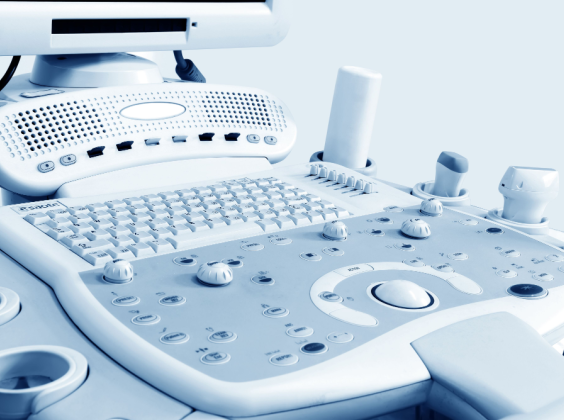
Written by

The ultrasound market is going through one of the most exciting and innovative periods in its history. The handheld ultrasound market is still maturing, there are many new technologies being developed, such as ultrasound patches and wearable transducers, opening new avenues for diagnostic use. Elsewhere, compact systems are becoming larger and more technically capable, and there is a wider range of cart systems available, both at more flexible price points for customers and offering more portability. Combined with growing use of AI technology to support image acquisition and interpretation, the long-term potential for the ultrasound market appears bright.
System Prices are Expected to Increase Again in 2023
Despite the bright outlook, the market has experienced some challenging periods lately. The supply chain issues in 2022 led to delayed lead times and price increases. Whilst price increases varied regionally, on average, prices increased by around 5-10%; in some regions, however, prices increased by as much as 20%.
Whilst supply chain issues are under control in 2023, as vendors become more flexible with their supply chains and have adapted, further price rises are expected, albeit to a lesser extent than in 2022. Typically, those vendors who did not increase prices in 2022 have had to increase them in 2023, whilst vendors who increased prices in 2022 will struggle to justify additional price rises in 2023.
Due to increased system prices, customers have reacted in one of three ways.
- Continue to purchase as usual and pay higher prices. The release of new ultrasound systems will have masked the impact of the price rises on the market average selling price, as prices will have changed with the release of a new system. For example, the launch of the Voluson Expert 22 system in 2022 will have caused the market average selling price of women’s health systems to increase in the countries where the system was released.
- Purchase lower priced ultrasound systems, such as a high-end ($60,000-$120,000) or mid-range ($30,000-$60-000) systems instead of premium systems ($120,000+). This trend is most evident in the radiology and women’s health markets.
- Delay purchasing and continue to use existing systems. This is becoming more prevalent in 2023, given the worsening economic climate.
Expansion of Chinese Vendors
Due to the local production policy introduced by the Chinese government in May 2021, some domestic Chinese vendors gained significant share in the Chinese market in 2022, with the impact on international vendors varying depending on how successful they have been in obtaining local production certification.
Less affected by supply chain issues, Chinese vendors have become more active in the market and looked to expand into new international markets, capitalising on the struggles of incumbent vendors.
The European and US markets are primary targets for Chinese vendors, and they are using product availability and competitive pricing to win sales. When entering the European market, Chinese vendors are starting in Eastern Europe, where their lower pricing is more favorable to customers, before moving into more premium-focused Western markets.
Artificial Intelligence Gaining Traction
Many ultrasound OEMs are embracing AI, with some seeing it as a way of differentiating themselves from their competitors. This is manifesting both as a feature of ultrasound systems and increased marketing on the potential value of AI. However, often the solutions offered are “AI” versions of existing tools, such as for ejection fraction assessment. In the last 12-18 months, there have been few new FDA approved AI solutions from ultrasound OEMs. There has, however, been more activity among ultrasound AI independent software developers. For example, Intelligent Ultrasound released its ScanNav Anatomy/PNB solution and Ultromics received FDA clearance for its EchoGo Heart Failure solution.
The ultrasound AI and equipment markets are also starting to consolidate, as seen through the increased number of partnerships and acquisitions. In 2023, Caption Health and DiA Imaging Analysis, two of the most established ultrasound AI vendors, were acquired by GE HealthCare and Philips, respectively. This follows the acquisition of Medo.ai by Exo in July 2022. EchoNous also partnered with UltraSight, which will see UltraSight’s Real Time Guidance solution integrated with EchoNous’ Kosmos device. Through its marketplace, Clarius has also partnered with numerous AI vendors, integrating their solutions onto its third-generation hand-held probes. We expect to see more relationships established between ultrasound equipment OEMs and ultrasound AI vendors in the future, as AI is increasingly utilized in ultrasound.
For AI to become more widely used in ultrasound, there also needs to be more applications that go beyond automating workflow processes. Whilst some of these solutions are on the market already, they have yet to have a big market impact. This could happen if there was more reimbursement, an effective commercial model (especially for solutions integrated into handheld ultrasound devices), and increased clinical validation, regulation, and physician confidence.
There have been no notable new market entrants in the ultrasound AI market. With the ultrasound AI market smaller and a lot less developed than for other imaging modalities, the introduction of notable new vendors is important for the market to evolve and mature.
The Handheld Ultrasound Market Continues to Mature
Technical improvements in handheld ultrasound, alongside growing awareness and acceptance of these products amongst clinicians, is increasing the use of ultrasound in some clinical applications. This is occurring mainly at the point of care, and for veterinary uses, by novice users. Whilst handheld ultrasound devices are often purchased in adjunct to cart and compact systems, the increased demand from novice users is leading to a divergence in purchasing, with customers either purchasing low-cost, ultraportable handheld ultrasound devices, or larger more technically capable compact systems. New users of ultrasound will typically opt for a handheld ultrasound device that is ultraportable and can be used for an initial ultrasound assessment, whilst more experienced users may opt for a compact system for more detailed imaging and advanced system features. Those who initially purchase handheld ultrasound devices may later purchase higher specification compact systems if they require more technical capabilities, or they may continue to use a handheld ultrasound device, favoring the ultra-portability provided by the form-factor.
Whilst the handheld ultrasound market remained consolidated in 2022, there have been new market entrants which could change this in the future. In 2022, Mindray launched its first handheld ultrasound device, the TE Air, included in all sales of its TEX 20 system. The TE Air will be released as a standalone solution in 2023. In July 2023, Konica Minolta launched its first handheld device, the PocketPro H2, and has partnered with Healcerion to distribute the PocketPro H2 in the US. In September 2023, Exo Imaging released its first handheld ultrasound device, the Exo Iris. The partnership between EchoNous and UltraSight, which will integrate UltraSight’s Real Time Guidance solution onto EchoNous’ Kosmos device, could also help EchoNous’ market performance in 2023.
Local Gains Traction
Governments are increasingly looking to promote local manufacturing of ultrasound systems sold in their country. China is the most prominent example, introducing its local production policy in 2021. Initially, this policy required 63% of deals to include locally made products, but this was increased to 85% in 2023. The Indonesian government is also pushing for more locally produced products and requires a minimum 25% of the system to be locally made. This 25% is only for primary care applications but is predicted to be rolled out to other clinical segments, with an increased percentage of the system to be domestically manufactured in the coming years.
In other regions, similar policies are enforced less stringently. In India for example, whilst there is a strong push for local manufacturing, with the Indian government offering incentives to convince vendors to produce systems locally, the objective from the government is to increase investment in India. In Brazil there is a 45% tax on imports and a preference of 10% in price if the product is made in Brazil. However, vendors can import and assemble systems in Brazil and still get certification, so long as a local component is included. The recent framework agreement announced between GE HealthCare and the Kazakhstan government will include localized production of medical equipment, including Ultrasound systems.
Related Research
Ultrasound Equipment – World – 2023
“World Market for Ultrasound Equipment – 2023 Edition” provides a data-centric analysis of current and projected demand for cart, compact, handheld ultrasound systems. It features analysis of 30 geographic markets, with breakdowns by clinical application and product mix. The report is based on a robust primary research method and sales data reported by vendors of ultrasound equipment.
About Mustafa Hassan
Mustafa joined Signify Research in 2020 as part of the Medical Imaging team which covers areas such as ultrasound, general radiography and machine learning in medical imaging. Prior to that he obtained a PhD in Pharmacy and Physiology from the University of Kent and has three years of post-doctoral experience working on optimising healthcare for genetic Cardiac diseases. In his spare time, he has a passion for sport and fitness and spending time with his wife and family.
About the Medical Imaging Team
The Medical Imaging team provides market intelligence and detailed insights on the medical imaging markets. Our areas of coverage include MRI, CT, X-Ray and Ultrasound. Our reports provide a data-centric and global outlook of each market with granular country-level insights. Our research process blends primary data collected from in-depth interviews with healthcare professionals and technology vendors, to provide a balanced and objective view of the market.
About Signify Research
Signify Research provides healthtech market intelligence powered by data that you can trust. We blend insights collected from in-depth interviews with technology vendors and healthcare professionals with sales data reported to us by leading vendors to provide a complete and balanced view of the market trends. Our coverage areas are Medical Imaging, Clinical Care, Digital Health, Diagnostic and Lifesciences and Healthcare IT.
Clients worldwide rely on direct access to our expert Analysts for their opinions on the latest market trends and developments. Our market analysis reports and subscriptions provide data-driven insights which business leaders use to guide strategic decisions. We also offer custom research services for clients who need information that can’t be obtained from our off-the-shelf research products or who require market intelligence tailored to their specific needs.
More Information
To find out more:
E: enquiries@signifyresearch.net
T: +44 (0) 1234 986111
